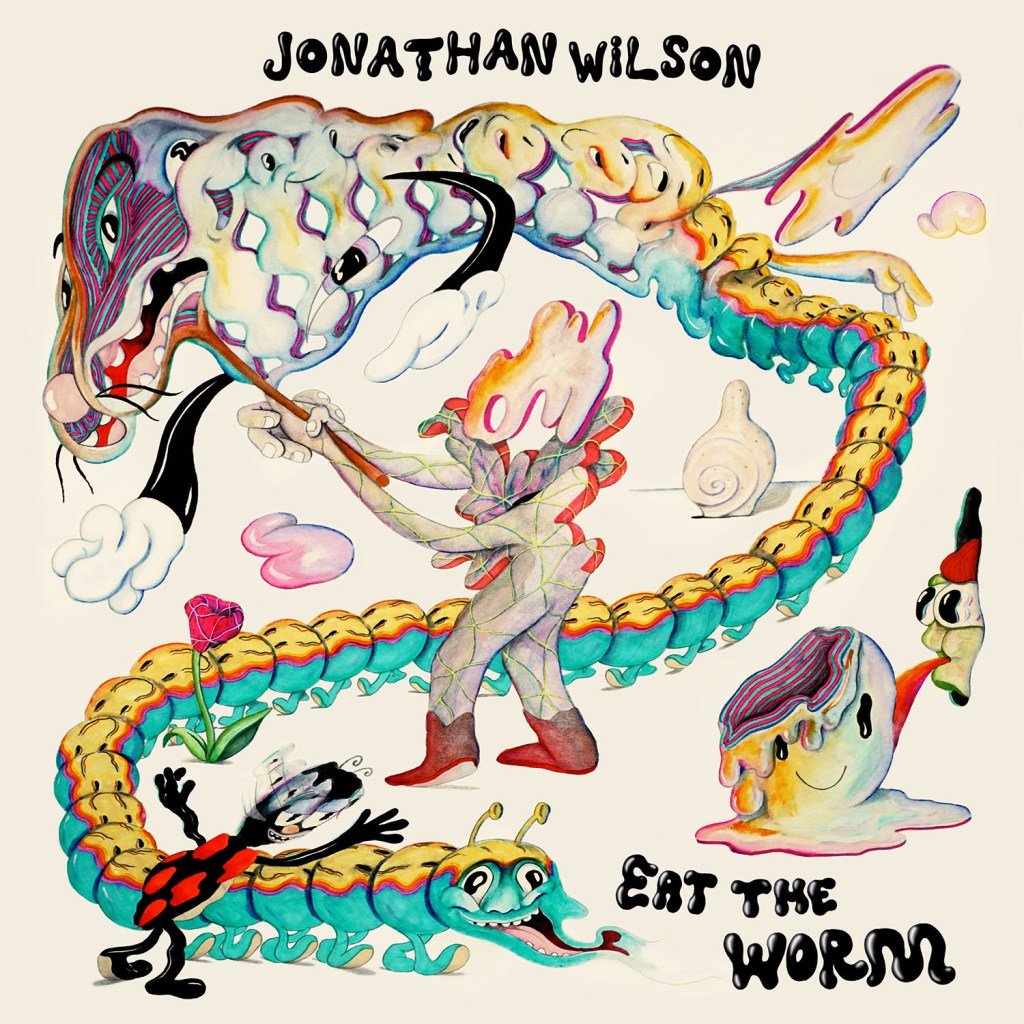Jonathan Wilson
Eat the Worm
(BMG)
3 1/2 out of 5 stars
Videos by American Songwriter
It’s safe to assume that even fans of the multi-talented (singer/songwriter/producer/arranger/studio owner/Roger Waters’ music director) Jonathan Wilson were not expecting the rather drastic transformation in musical direction that Eat the Worm, his first release since 2020 and fifth overall, displays.
The backstory is that Wilson chanced upon an obscure European named Jim Pembroke, who recorded a few hard-to-find albums. Wilson considered his output “genius-level strange” which one spin of any of Pembroke’s circuitously experimental and unequivocally non-commercial releases will confirm. That created in Wilson a spark to “break out of any and all comfort zones I may have lapsed into…” as he says in this set’s promotional notes.

The result is a sprawling, 12-song, 51-minute opus that, at least occasionally, will test the most open-minded listener. Wilson, who plays most of the instruments along with a few guests, slips into a laid-back voice similar to that of Harry Nilsson at his most reflective, singing lyrics—lots and lots of them—over music that shifts from Burt Bacharach’s easy-listening tempo to a Zappa-esque concoction. The laconic lope and askew concepts of “Charlie Parker,” where Wilson name-checks the Wright Brothers, jazz singers Kurt Elling, Al Jarreau, and even basketball player Larry Bird, beckons us into a harmonious fever dream (complete with scatting sax referencing the titular musician) of strings and changes from sweet to distracting.
For “Bonamassa,” (which does mention the blues-rocking guitarist), Wilson begins by talk-singing over stuttering beats. That dissolves into a dreamy string segment, after which he introduces a Jew’s harp as he recites the words weekly cheeky load (referring to the contents of Rolling Stone magazine), 12 times until the song fizzles out.
These are just a few examples of the sporadically psychedelic, always creative, frequently elaborate, and certainly bizarre soundscapes Wilson delivers with his usual attention to aural detail. Since he owns a studio, he has unlimited time to tweak these songs—many might be described as pieces—by layering “sonic palettes” (his words) over them. Reading along with the voluminous lyrics brings another dose of weirdness where the concepts are as oblique and often disjointed as the music.
None of this is sonically abrasive but it’s all challenging and a little goes a long way. At over 50 minutes, it’s a heavy lift that may confuse some but also intrigue others.
Let’s call it an acquired taste then, best appreciated by those without any predispositions or expectations about what they’ll hear when they push play. Kudos to Wilson for having the guts, ambition, and vision to create vistas outside the bounds of anything he has previously released, inspiring himself and his listeners as he traverses and explores original territory.
Photo by Andrea Nakhla / Courtesy Grandstand PR
